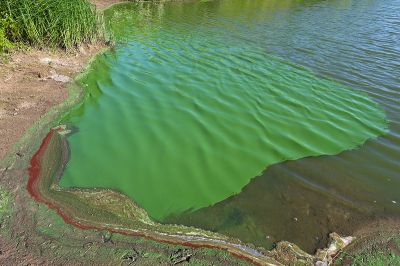Investigating the causes of algal blooms

Bloom of cyanobacteria, fot. Christian Fischer [CC BY-SA 3.0
Phytoplankton form the basis of the oceanic food web and sustain themselves using sunlight for photosynthesis and nutrients from the surrounding water. However, a rapid increase in phytoplankton can result in harmful algal blooms (HABs) that release toxins into the marine environment.
Toxins from HABs are harmful to fish and shellfish and can be lethal to
humans if such contaminated seafood is eaten. Therefore, HABs can have
serious economic consequences for local fishermen and tourism. The
AQUALIGHT project addressed this problem, investigating the presence of
HABs in Alfacs Bay, a tidal estuary in the north-west Mediterranean.
Scientists combined observations with 3D models to understand the
processes behind bloom formation in the Bay. Researchers also identified
which environmental conditions encourage bloom development and the
phytoplankton species involved.
Computer models were developed to study small-scale processes such
as the mixing of the water column due to turbulence, and light
availability. A model was also set up to determine the validity of
current methods for measuring phytoplankton growth and productivity.
Scenarios for different meteorological conditions were created that
showed that under low wind conditions Alfacs Bay experienced typical
estuarine circulation. This reduced the residence time of phytoplankton
in the bay, which decreased the likelihood of a HAB.
However, high wind speeds caused normal estuarine circulation to
break down, increasing residence time and the possibility of a HAB
occurring. This is because Alfacs Bay is high in nutrients compared to
the open sea, and a longer residence time means better growth conditions
for phytoplankton.
Knowledge gained through AQUALIGHT will help scientists make
predictions and establish early warning systems for HABs. This will
enable policy makers to make informed decisions that help reduce the
economic impacts of toxic blooms on the local fishing and tourism
industries.
Furthermore, as HAB events occur across the globe, the scientific
insights gained through the work of AQUALIGHT can help all communities
that face recurring HAB outbreaks.
published: 2015-03-09